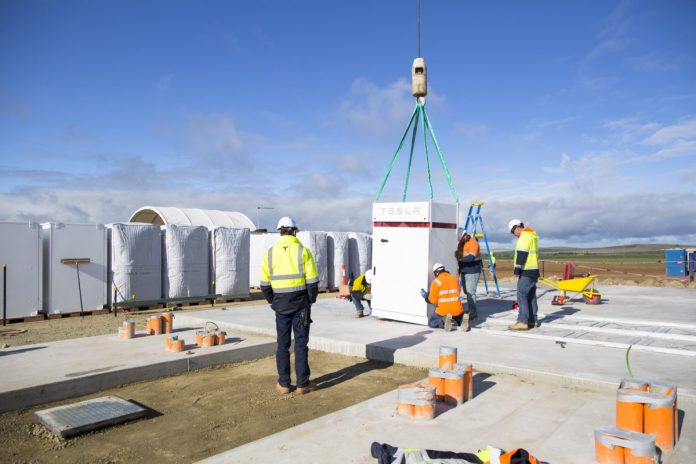French renewables developer Neoen has reported the first-quarter 2020 revenue of €95.8 million (AU$ 161 million), an increase of 61% compared to the same period last year. While the key factor behind the surge was the early generation revenue from its assets commissioned in 2019, another major factor was an unprecedented increase in storage revenues earned in Australia.
In the March quarter, Neoen’s total storage revenue came to €21.6 million (AU$ 36.3 million) – almost all of it from the Hornsdale Power Reserve in South Australia (SA) – up from €4.2 million (AU$ 7 million) in the first quarter of 2019. The key reason behind this very hefty increase was “an exceptional non-recurring event in Australia,” the company said.
After a tornado in late January pulled down the Heywood interconnector between SA and Victoria, SA was islanded from the rest of the Australian grid for 18 days. Upon the request of the Australian Energy Market Operator (AEMO), Neoen’s Hornsdale big battery and two other smaller batteries in the state – Dalrymple ESCRI and Lake Bonney – assumed critical roles during this period in maintaining the grid’s reliability while keeping electricity costs down for consumers.
While such unusual network conditions are not expected to repeat any time soon, the Hornsdale Power Reserve, also known as the Tesla Big Battery, earned more in only one quarter than in all of 2019 or 2018. Last year, the developer recorded a nearly 14% increase in annual revenue to €20.5 million (AU$34.5 million) up from €18 million ($30 million) generated in 2018.
The 100MW/129MWh Tesla big battery, located in Jamestown in SA and adjacent to the 315 MW Hornsdale Wind Farm, has already demonstrated its immense value for the grid in a number of ways, largely through grid stabilization services and savings. But the project, which is being expanded by 50%, through the addition of 50MW/64.5 MWh of Tesla batteries, is set to become an even more valuable asset to the National Electricity Market (NEM) through the addition of digital inertia services.
Solar revenues
Neoen’s solar projects also had a big say in the surge of overall first-quarter revenues. Specifically, PV projects commissioned during 2019 in Australia, Zambia, Jamaica, and France saw Neoen’s solar revenues grow 46% compared to the first quarter of 2019. In Australia, the French developer already has six solar farms under its belt and enjoys the status of Australia’s leading independent producer of renewable energy.
In 2018, the developer commissioned five utility-scale PV farms, all in New South Wales, with a combined capacity of just over 250 MW. In 2019, it commissioned a further 100 MW of PV – the Numurkah project that has a major supply contract secured with the Laverton Steelworks and is one of two solar farms supplying 100% renewable energy to offset Melbourne’s entire tram network. Neoen also tops the list of lithium-ion battery developers and ranks within the top 10 wind developers in Australia.
Last week, Neoen confirmed it would build Australia’s largest solar farm in Queensland’s Western Downs region after securing a contract to sell most of the power to the state government-owned renewable energy generator, CleanCo. On top of this, the group has a number of massive projects in its Australian pipeline, including the proposed Goyder South Project featuring 1200 MW of wind, 600 MW of solar, and 900 MW of battery storage. Last month, Neoen and its partner Mondo Power filed a planning application for a massive 600 MW battery storage project near Geelong in Victoria.
Globally, the cumulative capacity of Neoen’s operational projects stood at 2 GW at the end of March. Assets in operation, under construction and awarded, stood at 4.2 GW.






